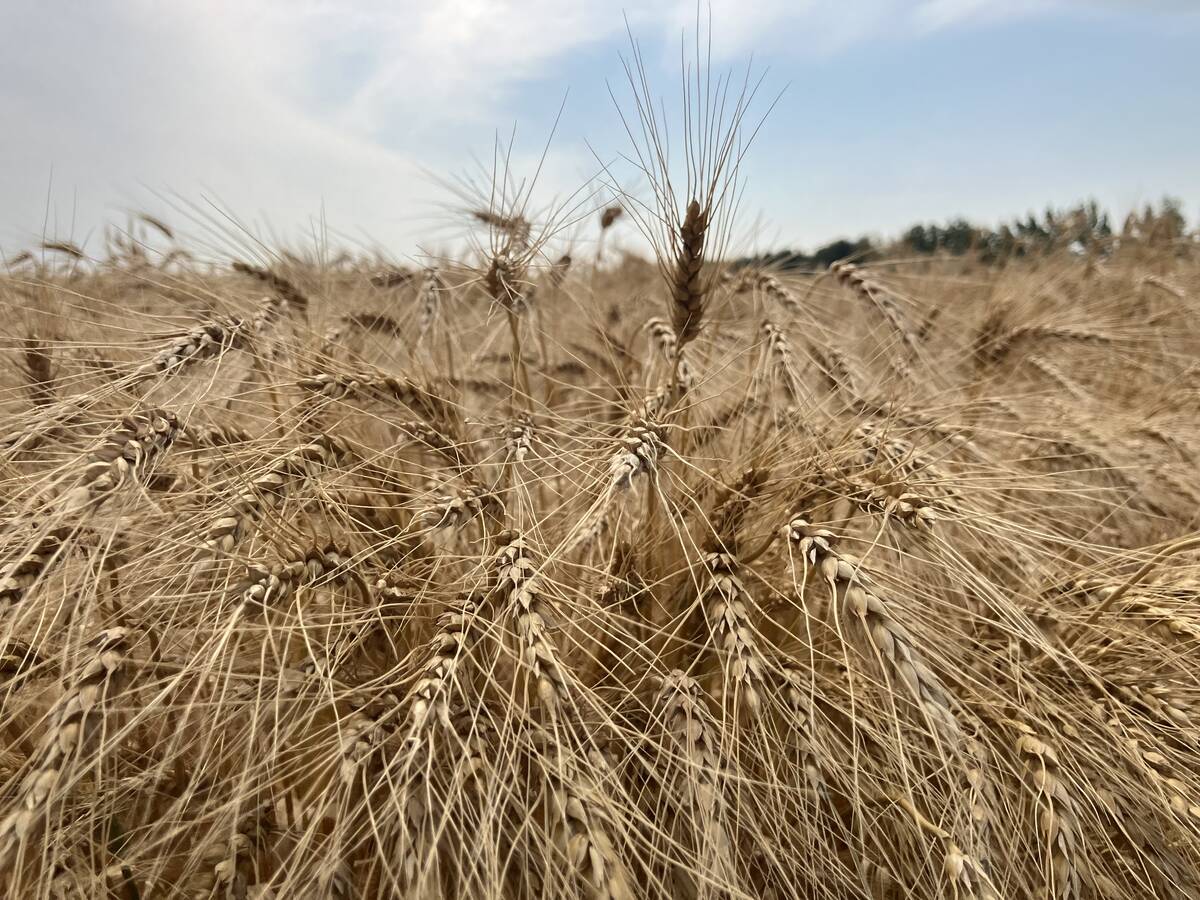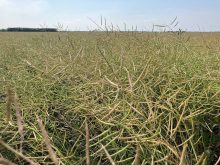SASKATOON — Canadian flax growers will face stiff competition from the Black Sea region in 2025-26, says a trader of the crop.
“Globally, the supplies are heavy,” said Tyson Fehr, procurement and marketing manager with Prairie Premium Products Inc., a Manitoba processor of the crop.
Kazakhstan and Russia have big crops and so does Canada.
Saskatchewan Agriculture is forecasting a provincial average yield of 26 bushels per acre, which is above Statistics Canada’s latest estimate of 24.
Fehr thinks Saskatchewan Agriculture’s number is closer to reality.
Read Also

Prairie spring wheat looks like a bumper crop
Canada will likely set a new record for spring wheat yields this year, topping the previous mark of 54.1 bushels/acre – set in 2020
“We have lots of guys in the 30s and 40s and a couple of guys in the 50s,” he said.
All the growers he has spoken to say they were “pleasantly surprised” with yields this year.
Consequently, the production number will likely come in higher than Agriculture Canada’s 365,000 tonne estimate.
Global flax production set a record this year, according to a UkrAgroConsult article.
It reports that production is up 21 percent in Russia, 26 percent in Kazakhstan and 27 percent in Canada.
Russian farmers produced 1.63 million tonnes of the commodity, Kazakhstan’s growers chipped in another 810,000 tonnes and Canada’s producers contributed 328,000 tonnes, according to the UkrAgroConsult story.
That is a lower estimate than Statistics Canada is forecasting.
Russia will be a big player in China, but not the European Union. Russian flax faces a 20 per cent tariff in the EU market, which rises to 50 per cent at the start of 2026.
That opens the door to Kazakhstan expanding sales in the EU.
“Kazakhstan is going to (provide) some stiff competition going forward,” said Fehr.
“The EU likes their stuff. They like to (buy) from there, and logistically it makes sense as well.”
However, he has heard from some European contacts that there are quality issues with Kazakhstan’s yellow or golden flax. As well, there are reports that an early snowfall could be making matters worse.
“There might be some opportunity for some (Canadian) yellow flax to go for export there, but nothing we’ve seen come to the table here yet,” said Fehr.
Russia recently introduced a 10 per cent export tax on flax. It had previously been one of the few Russian crops that did not have a tax.
Analysts believe the tax was introduced to support the domestic crush sector. ASVA is building a new flax processing plant in the Rostov region of Russia that will be capable of processing 148,500 tonnes of the oilseed per year.
Fehr said Russia’s export tax is “a bit of a silver lining” for Canada because it will make Canadian flax more competitive in the Chinese market.
“That creates a little bit of optimism that they might come back to Canada for some,” he said.
However, the United States will remain Canada’s main market for flax, with China and the EU chipping in.
The Kazakhstan Grain Union is forecasting 680,000 tonnes of exports in 2025-26, a 30 percent increase over last year’s 524,000 tonnes, which was a 74 per cent increase over the previous year.
The European Union, China and Afghanistan will be the main destinations for Kazakhstan’s flax, according to UkrAgroConsult’s article.
“Given the record harvest and favourable logistical conditions, Kazakhstan could partially displace Russia from the Chinese market, where price competition will intensify due to Russian tariffs,” stated the story.
Fehr said the big Black Sea crops will keep a lid on Canadian prices. Flax prices have been holding up better than competing crops, but any bull run is unlikely due to the global supply glut.


















